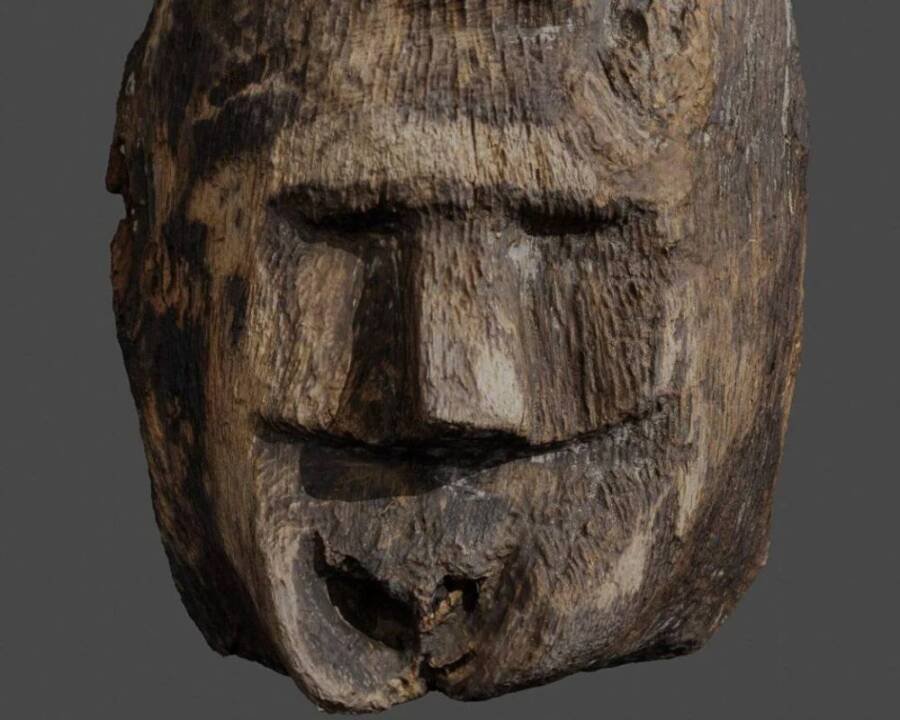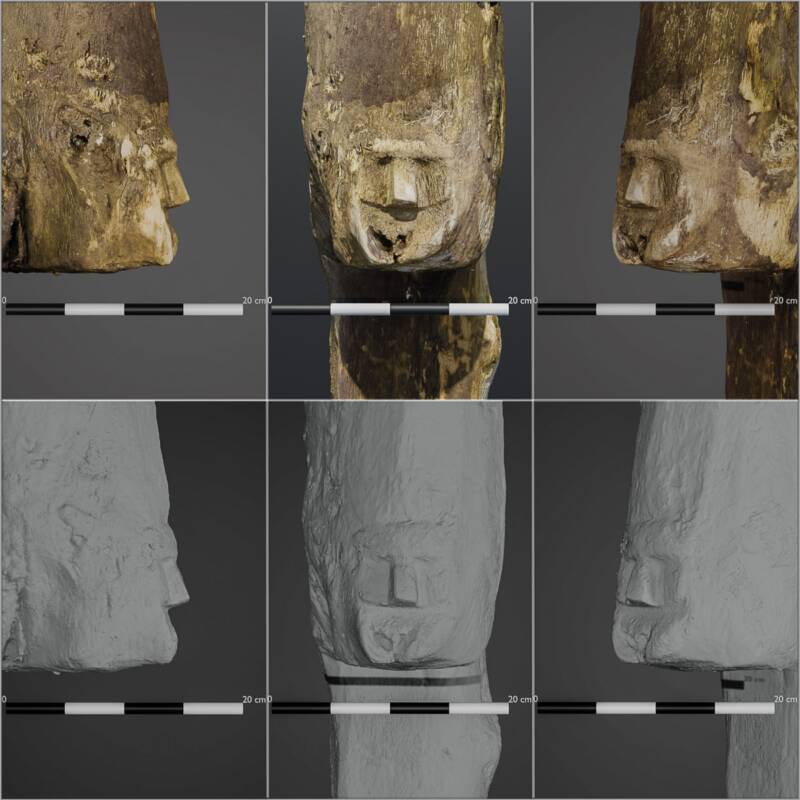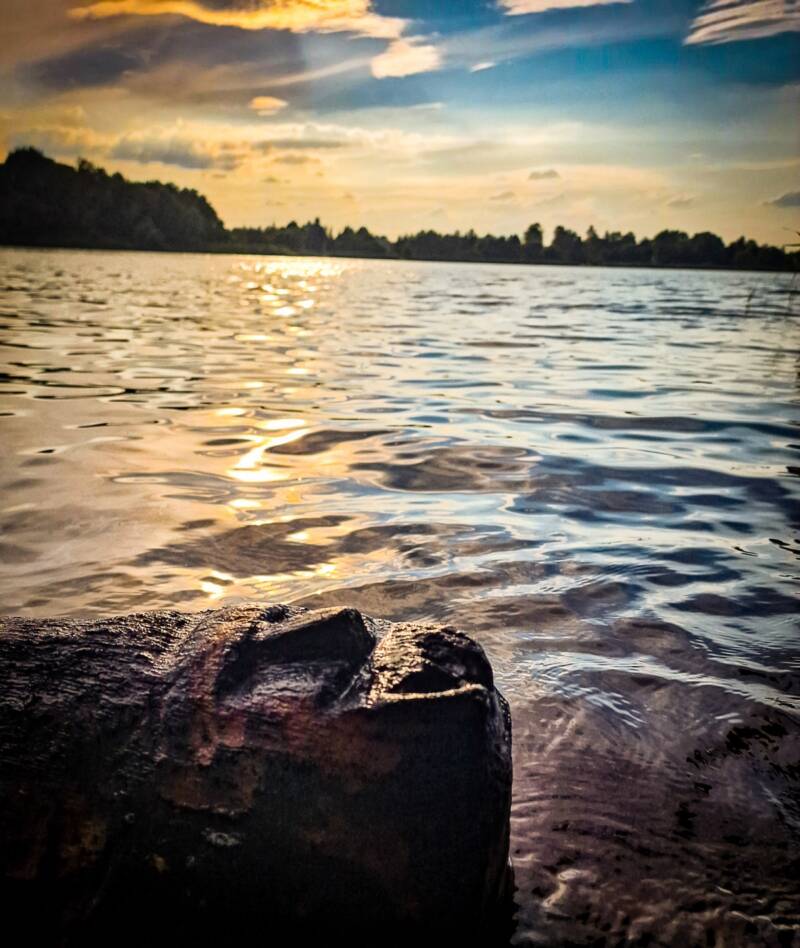The face was carved into a wooden beam around 967 C.E. and was likely part of a medieval fortress that once stood on an island in the middle of Poland's Lake Lednica.

Museum of the First Piast DynastyArchaeologists believe the carving on the wooden beam served more than just a decorative purpose.
A wooden human face dating back approximately 1,000 years was found at the bottom of Lake Lednica in central Poland.
It was carved into a beam that was likely a remnant of the defensive ramparts of the medieval fortress on the island known as Ostrów Lednicki. The fortress is believed to have been home to the House of Piast, the first royal dynasty of Poland.
The face seemingly represented a deity or a hero of the stronghold, adding to what archaeologists know about medieval Slavic spiritual traditions.
The Wooden Face At The Bottom Of Lake Lednica
Archaeologists from Nicolaus Copernicus University in Toruń, Poland, found a wooden beam at the bottom of Lake Lednica during recent excavations, according to the Museum of the First Piast Dynasty in Lednica. However, it wasn’t just any old piece of wood.
“When we cleaned it thoroughly, it turned out that a face was looking at us,” Mateusz Popek, a member of the research team, told Notes from Poland. “We never expected to discover something like this, even in our wildest dreams.”

Museum of the First Piast DynastyExperts determined that the face was likely carved sometime between 960 and 975 C.E.
The archaeologists made the discovery as part of ongoing excavations at the site. Since the 1980s, researchers have been studying Lake Lednica, a place known to be important to the Piasts, the first royal dynasty of Poland that ruled from the 10th to the 14th century.
After discovering the human face that adorned the wooden beam, the team sent the post off to undergo further analysis to determine its age and origin. Researchers used dendrochronology, a method of analyzing tree rings, to date it. They determined the oak beam was probably carved sometime between 960 and 975 C.E.
The beam was likely part of the defensive ramparts of a fortress on Ostrów Lednicki, an island in the middle of the lake. However, archaeologists don’t think the face was simply a decorative feature. Instead, it seemingly served a symbolic purpose.
What Was The Meaning Of The Wooden Face?
It’s unclear exactly what or whom the carved face was meant to symbolize, as finds like this one are rare. Wood can decompose quickly, and this post is one of just a few pieces of Ostrów Lednicki’s medieval fortress that have been uncovered in recent years.
This carved face only survived through the centuries because the beam settled on the bottom of the lake, perhaps during a landslide, allowing it to be preserved.

Museum of the First Piast DynastyResearchers believe the face carving would have looked out toward the lake, symbolically protecting the fortress from attack.
Archaeologists say the face would have faced outward, overlooking the lake, and may have represented a protective spirit or deity that lived in bodies of water. This suggests that human-like representations of deities or spirits may have been more common in medieval Slavic culture than they previously believed. However, it is difficult to definitively determine this one way or the other, given the lack of similar artifacts.
There are a few examples of finds similar to this one from St. Petersburg, Russia, as well as the island of Wolin in Poland. The four-faced figurine discovered in Wolin has similar physical features to the carved face found in Lake Lednica. Its similarly triangular chin and straight nose show there may have been a local shared culture.
Archaeologists say the carved face fits into what is already known about Slavic spiritual traditions and “opens a fascinating discussion on the spiritual life of early medieval Slavs.”
The wooden face will be on display at the Museum of the First Piast Dynasty in Lednica beginning next year.
After reading about the carved human face found at the bottom of Lake Lednica, look through these reconstructed faces of ancient people. Then, learn about the haunted history of India’s Roopkund Lake.





